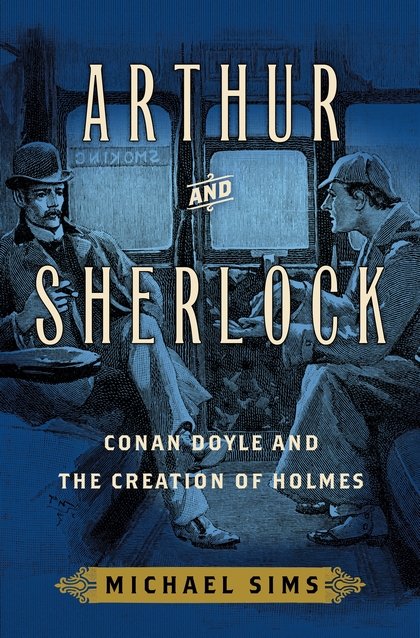
Rather than a biography of Arthur Conan Doyle, this is a history of all of the people surrounding the world’s greatest consulting detective. Instead of trying to encompass a whole (very accomplished) life, Sims chooses to take a magnifying glass to Conan Doyle’s early professional life as a student, doctor and writer, up until the birth of Sherlock Holmes.
Piece by piece, he unmasks aspects of Conan Doyle’s past that point to inspiration for Holmes and the fantastic stories. Most notably (and a personal hero of mine) is Dr. Joseph Bell, a teaching physician at the University of Edinburgh while Conan Doyle studied there. The book, in fact, opens with a quote from Bell, and sets the tone for the whole work.
The student must be taught to first observe carefully. To interest him in this kind of work, we teachers find it useful to show the student how much a trained use of observation can discover in ordinary matters such as the previous history, nationality, and occupation of a patient… Physiognomy helps you to nationality, accent to district, and, to an educated ear, almost to a county. Nearly every handicraft writes its sign-manual upon the hands. The scars of a miner differ from those of the quarryman. The carpenter’s callosities are not those of the mason.
– JOSEPH BELL, M.D.
Sims recounts Conan Doyle’s days in Edinburgh, his love of books, the trips as a ship’s surgeon to the Arctic and Africa, and the relationships with his family. He then moves on to analyze the detective genre itself, with an exploration of the Bow Street Runners, Vidocq, Wilkie Collins, Dickens and Poe. Finally, he relates the publishing climate during the era and how Conan Doyle navigated it to finally find fame.
Sims finds the perfect balance of facts and wonder. He presents the information with a certain glee that is infectious, all the while dropping subtle references to the canon. Conan Doyle married the sister of his own resident patient and poisoned himself in the name of science, though not with Devil’s Foot. There’s even a mischievous monkey like the culprit of Poe’s Murders of the Rue Morgue. Yet, there is no smugness in Sims’ writing, only genuine joy. Even the search for the name “Sherlock” in Conan Doyle’s life takes on a exuberant attitude.
Arthur got along well with most other students, such as classmate Patrick Sherlock, who was a distant relative of Arthur’s Irish aunt Jane Doyle. Probably young Patrick reminded Arthur of William Sherlock, the controversial divine who wound up dean of St. Paul’s Cathedral in London in the late 1600s; Arthur’s favorite historian Thomas Babington Macaulay, featured Sherlock prominently in his History of England. Arthur often ran across this surname. … And 1868 the year that Arthur turned nine, saw publication of A Lost Name, a novel by the Irish ghost story writer and Gothic novelist Sheridan Le Fanu, which featured a character named Carmel Sherlock. ~Pg. 26
Even for a Sherlockian such as myself — one who has been to the Surgeon’s Hall Museum to explore Bell’s artifacts, and who has sat in a wingback chair at 221b Baker Street — there was still a great deal to discover about Arthur and Sherlock. I look forward to revisiting it for years to come, just as I have the adventures of Holmes and Watson.
Watch this space for an upcoming interview with author Michael Sims.
My thanks to Sarah at Bloomsbury for the review copy.
___________
Published: 01-24-2017
Format: Hardback
Edition: 1st
Extent: 320
ISBN: 9781632860392
Imprint: Bloomsbury USA
Illustrations: 1 x 8-page B+W insert
Dimensions: 6 1/8″ x 9 1/4″
List price: $27.00
